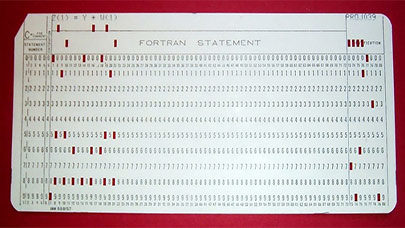
Fortran: Still Compiling After All These Years
September 20, 2023
A recent article appearing in EDN (Electrical Design News) points out that on this day, September 20, 1954, the first Fortran program ran on a mainframe compute Read more…

15 Slides on Programming Aurora and Exascale Systems
May 7, 2020
Sometime in 2021, Aurora, the first planned U.S. exascale system, is scheduled to be fired up at Argonne National Laboratory. Cray (now HPE) and Intel are the k Read more…

SC16 Preview: Modernizing, Modularizing Fortran Codes
November 9, 2016
The programming language Fortran has been in existence since 1957, and a large percentage of software that runs on HPC systems worldwide is written, at least in part, in Fortran. Since it has been in existence for so long, and so many scientists and engineers learned it early in their careers and have utilized it extensively, much of this code is not up to modern standards of software development. Read more…

Building Parallel Code with Hybrid Fortran
July 31, 2014
Over at the Typhoon Computing blog, Michel Müller addresses a topic that is top of mind to many HPC programmers: porting code to accelerators. Fortran p Read more…

Intel Firms Up Fortran, Steps to Standards
September 4, 2013
Following Intel's low-key announcement today of updates to Cluster Studio and Parallel Studio, we spoke with its software and tools guru, James Reinders, about what these enhancements mean for Xeon Phi, Fortran development, and the advancement along standards lines, including OpenMP 4.0 and.... Read more…

NVIDIA Takes PGI Under Wing
July 29, 2013
Moments ago, NVIDIA announced its acquisition of the Portland Group (PGI) which has provided compiler and tools for the HPC-oriented C and Fortran markets. According to the company's Sumit Gupta, this will allow them to further build their software portfolio and to push the adoption of GPUs through OpenACC in particular. NVIDIA and PGI will... Read more…

Speaking Many Languages into the MIC
May 8, 2013
Traditional HPC languages, Fortran, C and C++, have little native control over hardware capabilities such as SIMD operations, multi-core availability and prefetch instructions. The burden of optimization is therefore... Read more…

Why Fortran Still Matters
September 20, 2011
Steve Lionel, aka, "Doctor Fortran" defends the venerable programming language and its modern relevance. Read more…

- Click Here for More Headlines

Whitepaper
Transforming Industrial and Automotive Manufacturing
In this era, expansion in digital infrastructure capacity is inevitable. Parallel to this, climate change consciousness is also rising, making sustainability a mandatory part of the organization’s functioning. As computing workloads such as AI and HPC continue to surge, so does the energy consumption, posing environmental woes. IT departments within organizations have a crucial role in combating this challenge. They can significantly drive sustainable practices by influencing newer technologies and process adoption that aid in mitigating the effects of climate change.
While buying more sustainable IT solutions is an option, partnering with IT solutions providers, such and Lenovo and Intel, who are committed to sustainability and aiding customers in executing sustainability strategies is likely to be more impactful.
Learn how Lenovo and Intel, through their partnership, are strongly positioned to address this need with their innovations driving energy efficiency and environmental stewardship.
Download Now
Sponsored by Lenovo
Whitepaper
How Direct Liquid Cooling Improves Data Center Energy Efficiency
Data centers are experiencing increasing power consumption, space constraints and cooling demands due to the unprecedented computing power required by today’s chips and servers. HVAC cooling systems consume approximately 40% of a data center’s electricity. These systems traditionally use air conditioning, air handling and fans to cool the data center facility and IT equipment, ultimately resulting in high energy consumption and high carbon emissions. Data centers are moving to direct liquid cooled (DLC) systems to improve cooling efficiency thus lowering their PUE, operating expenses (OPEX) and carbon footprint.
This paper describes how CoolIT Systems (CoolIT) meets the need for improved energy efficiency in data centers and includes case studies that show how CoolIT’s DLC solutions improve energy efficiency, increase rack density, lower OPEX, and enable sustainability programs. CoolIT is the global market and innovation leader in scalable DLC solutions for the world’s most demanding computing environments. CoolIT’s end-to-end solutions meet the rising demand in cooling and the rising demand for energy efficiency.
Download Now
Sponsored by CoolIT
Advanced Scale Career Development & Workforce Enhancement Center
Featured Advanced Scale Jobs:
HPCwire Resource Library
HPCwire Product Showcase
© 2024 HPCwire. All Rights Reserved. A Tabor Communications Publication
HPCwire is a registered trademark of Tabor Communications, Inc. Use of this site is governed by our Terms of Use and Privacy Policy.
Reproduction in whole or in part in any form or medium without express written permission of Tabor Communications, Inc. is prohibited.
























